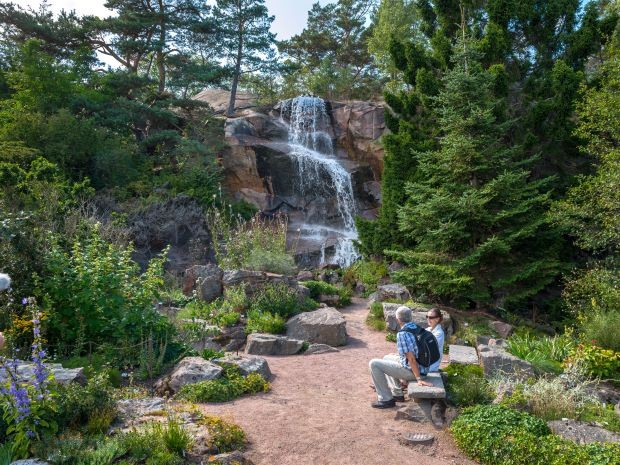Rock gardens, with their rugged beauty and miniature alpine plants, offer a unique and rewarding gardening experience. This guide provides a comprehensive overview of how to build your own rock garden, from site selection and rock placement to soil preparation and plant choices.
Rock Garden Essentials: Planning and Preparation
Careful planning is crucial for a successful rock garden. Avoid rushing into the project without considering essential factors.
The “Rules” of Rock Garden Construction:
These guidelines ensure your rock garden thrives by mimicking alpine environments:
- Choose an Open Site: Opt for a location away from overhanging trees and buildings to maximize sunlight exposure.
- Natural Backdrop: Select a site with an appealing natural background that complements the rock garden’s aesthetics.
- Weed-Free Foundation: Ensure the soil is completely free of perennial weeds and tree roots to prevent competition with your alpine plants.
- Excellent Drainage: Alpine plants require well-draining soil to prevent root rot.
Rock gardens thrive by recreating the conditions found high in the mountains, above the tree line. This means maximizing sunlight and airflow.
Open Site Selection
Ideally, a rock garden should be located in an open area, away from the shade of trees or buildings. Even if a fully open site isn’t available, choose a spot that receives ample sunlight throughout the day.
Creating a Natural Background
Integrating the rock garden seamlessly into its surroundings is key. A natural backdrop enhances the garden’s aesthetic appeal.
Weed Removal
Thorough weed removal is essential. Eliminate any existing weeds, including their roots, before starting construction. This prevents them from competing with your alpine plants.
Ensuring Good Drainage
Proper drainage is crucial for the health of rock garden plants. Incorporate plenty of grit and sand into the soil to improve drainage, especially in areas with clay soil.
Rock Sourcing and Placement: Building Your Foundation
Finding the Right Rocks
Source rocks that are local to your area and complement the surrounding landscape. Limestone is a good option for a natural, greyish look.
Arranging the Rocks
Start by placing the largest rocks, or “keystones,” to establish the foundation of the rock garden. These rocks should be partially submerged in the soil to create a natural look.
Creating a Visual Hierarchy
Position the largest stones at the base and top of the slope to provide a sense of grounding and draw the eye upward. Use smaller stones to fill in the design and create planting pockets.
Securing the Rocks
Ensure that all rocks are firmly in place by ramming soil into any gaps or crevices. This prevents them from shifting and creating instability.
Balancing Aesthetics
Step back and assess the design from different angles to ensure it looks balanced and natural. Adjust the placement of rocks as needed.
Adding Smaller Rocks for Detail
Use smaller stones to connect the larger stones visually and create nooks and crannies for planting. Experiment with different arrangements until you achieve the desired balance.
Creating Microclimates
Strategically placing rocks creates microclimates, offering varied conditions for different plants. These can range from sunny, dry spots to shady, moist nooks.
Constructing a Crevice Garden
A crevice garden provides unique planting opportunities. Use paving slabs to create narrow crevices filled with well-draining soil.
Soil Preparation and Planting: Bringing Your Rock Garden to Life
Preparing the Soil
Mix in plenty of sharp grit and sand to improve drainage. The soil should be well-draining but still retain enough moisture to support plant growth.
Selecting Plants
Choose alpine plants and dwarf conifers that are well-suited to rock garden conditions. Consider factors such as sunlight exposure, soil moisture, and hardiness.
Planting and Finishing Touches
Cover the soil surface with a layer of grit that complements the color of the rocks. This helps to retain moisture, suppress weeds, and create a natural look.
Rock Garden: A Personal Expression
Building a rock garden is a journey that reflects your personal taste and aesthetic preferences. Embrace the process and create a unique and beautiful space that you can enjoy for years to come.


